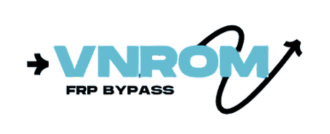Unlocking the Potential of Streamlined Efficiency

In the fast-paced world of modern enterprises, efficiency isn’t just a luxury—it’s a necessity. Organizations today are striving to remain competitive by optimizing their workflows and reducing redundancy. The journey toward achieving a seamless flow of operations is often marked by innovation, strategy, and technological prowess.
The Modern Work Environment: Challenges and Opportunities
The workplace has evolved dramatically over the last decade. Remote work, globalization, and technological advancements have brought unique challenges and opportunities for businesses. Managing these changes while maintaining operational excellence is no small feat.
One common hurdle is managing repetitive and time-consuming tasks that drain resources and hamper creativity. For example, manual data entry, employee onboarding, and invoice processing often consume valuable time that could otherwise be spent on strategic initiatives. Identifying these bottlenecks is the first step toward crafting a more productive work environment.
Breaking Down Silos
Another critical aspect of achieving operational efficiency is fostering collaboration. Departments often operate in silos, leading to miscommunication and inefficiencies. Bridging these gaps can be transformative, allowing organizations to harness collective intelligence.
One way to achieve this is by integrating technology that connects various facets of the organization. When done correctly, this integration fosters real-time communication and ensures everyone is on the same page, enhancing overall productivity.
The Role of Technology in Optimization
Technology serves as the backbone of any efficiency-driven initiative. The digital transformation wave has introduced advanced tools that simplify complex processes and eliminate unnecessary steps. These innovations not only save time but also reduce the risk of human error.
For example, many companies have started implementing solutions that automate repetitive tasks. This strategic shift allows teams to focus on higher-value activities, fostering growth and innovation. It’s no wonder that concepts like business process automation have gained traction as organizations seek to streamline their operations.
Crafting a Future-Ready Workforce
While technology plays a pivotal role, it’s equally important to invest in the workforce. Employees need to adapt to the evolving landscape and embrace the tools and systems that come their way. Providing training and support ensures that teams are not only productive but also confident in navigating the changing environment.
Moreover, empowering employees with the right tools and knowledge encourages a culture of continuous improvement. This mindset leads to sustainable growth and positions the organization for long-term success.
Measuring Success and Continuous Improvement
Streamlining efficiency is an ongoing process, not a one-time project. Organizations must establish clear metrics to evaluate the success of their initiatives. Metrics such as task completion rates, error reduction, and employee satisfaction can provide valuable insights into the effectiveness of their strategies.
Furthermore, collecting feedback from employees and stakeholders is crucial. This feedback loop allows organizations to refine their processes and adapt to emerging challenges, ensuring they remain agile in a dynamic business environment.
The Big Picture
Optimizing operations and embracing innovation paves the way for a more resilient organization. By addressing inefficiencies, breaking down silos, and leveraging technology, businesses can unlock new levels of productivity and creativity. As organizations continue to adapt, the ability to effectively implement solutions like business process automation will remain a critical factor in staying ahead of the curve.
Ultimately, the journey toward streamlined efficiency is about more than just processes—it’s about creating a workplace where ideas thrive, teams collaborate, and goals are achieved with precision and purpose.
